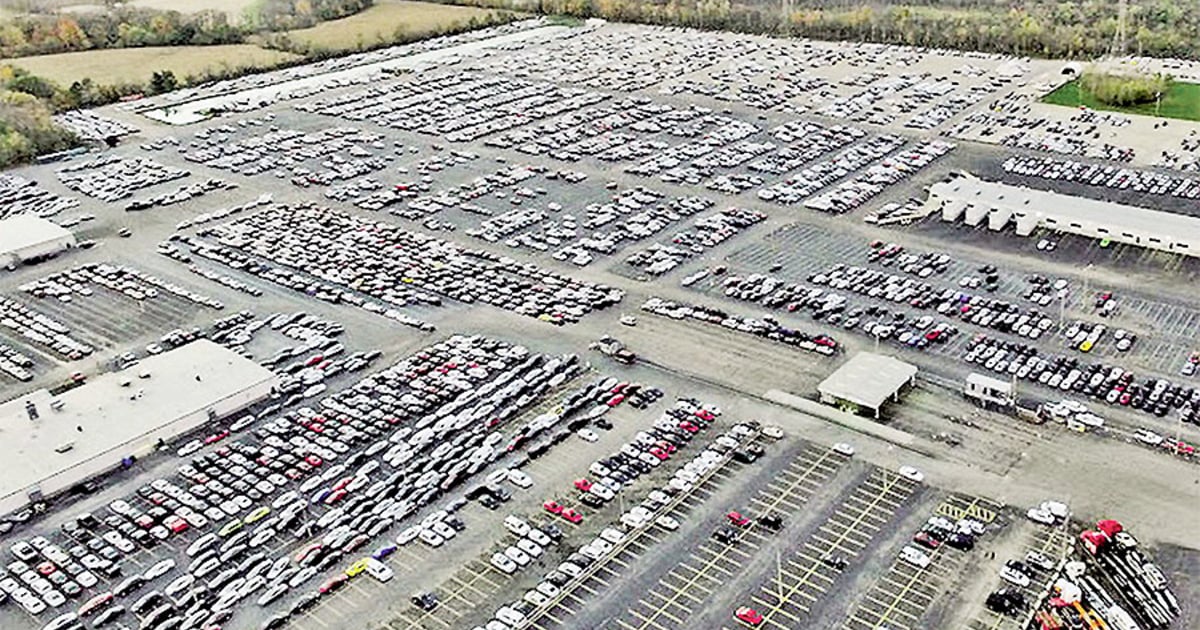
Wholesale used-vehicle prices are expected to gradually cool through the rest of the year after unseasonably appreciating to start 2023.
Improvement in new-vehicle inventory levels and an uptick in incentives offered — though both still far below their pre-pandemic levels — stand to somewhat undercut used-vehicle demand as the year progresses. Such pressure from the new-vehicle side could drive a decline in used-vehicle prices.
However, a used-vehicle inventory crunch expected to deepen through the year likely will keep used-vehicle prices from falling dramatically, said Alex Yurchenko, chief data science officer at Black Book. Franchised dealerships already grappling with tight used-vehicle supply will encounter more scarcity as fewer lease returns, lost in 2020 when COVID-19 closures stunted new-vehicle production, flow back into the market.
“By the end of this year, those leases that were not sold three years ago are not going to be coming back,” Yurchenko said.
That will help used-vehicle prices stay elevated compared with pre-COVID levels, he said.
Two major indicators both recorded wholesale price declines in April, signaling a turning point in wholesale price appreciation that defined the first quarter.
Cox Automotive said its Manheim Used Vehicle Value Index — a measurement of wholesale used-vehicle prices calculated by tracking vehicles sold at Manheim’s U.S. auctions and applying statistical analysis to those figures — declined 3 percent in April from March. Cox adjusts that figure for mix, mileage and seasonality. It was the first month in 2023 the index declined.
The index fell another 2.1 percent from the end of April at a mid-May check-in — another sign the momentum seen in the market in early 2023 is coming to a close, according to Cox Automotive.
Wholesale prices rose for four consecutive months from December to March, according to the index. The used-vehicle market had been very tight on supply to begin the year, which created the environment for the increases that occurred in that period, Cox Automotive Chief Economist Jonathan Smoke said during a quarterly insights call in April.
And Black Book’s Used Vehicle Retention Index — another indicator of wholesale prices, weighted based on registration volume and adjusted for seasonality, vehicle age, mileage and condition — fell 0.1 percent in April from March.
There is a caveat, Yurchenko said: Certain vehicle segments in high demand continued to appreciate, while some subsegments declined faster. In a release discussing Black Book’s April index, Yurchenko said wholesale prices in most compact to full-size mainstream vehicle segments underperformed. However, prices of smaller and cheaper subcompact vehicles, such as sedans and crossovers, overperformed in April, he said.
In a typical year, dealers stock inventory in preparation for a boost in consumers’ buying activity through March, April and May, which occurs as consumers receive income tax refunds and use them to purchase vehicles.
This year, dealers “started to prepare much earlier,” Black Book’s Yurchenko said, as there was expectation that used-vehicle demand would be higher in the spring than it was in autumn.
Though her 22-store dealership group generally avoids acquiring inventory through auctions, Corina Diehl, president of Diehl Automotive Group, of Butler, Pa., said she noticed some vehicles’ wholesale values exceed their retail values.
Wholesale values steadily rose in the spring, with some surpassing retail values, said Glenn Allen, director of variable operations at Team Automotive Group, of Salisbury, N.C., a dealership group with seven stores in North Carolina and South Carolina. He attributed that to a lack of used-vehicle inventory and increased vehicle acquisition activity by rental car companies.
It was a contrast to fall 2022, a period in which used-vehicle values of the group’s inventory depreciated close to $150 a day, Allen said. He expects retail pricing to catch back up over the summer as wholesale prices decline slightly. Rental car companies also may return to a normal acquisition cycle starting in late August, which could improve inventory levels, he said.
Vehicle price appreciation and strong dealer demand that manifested in January and February partly aided how much gross profit per wholesale vehicle CarMax Inc. took in in its fourth fiscal quarter, CEO Bill Nash said during a company earnings call in April. The used-vehicle retailer’s wholesale vehicle sales fell 19 percent in the period to 120,330, but gross profit per wholesale vehicle declined just $4 to $1,187.
“Even though we’ve seen some recent appreciation, I would expect to probably start to see a little bit more depreciation as we go forward, so that should continue to give a little bit of relief on the overall retail sales price,” Nash said.
Abigail Ham contributed to this report.

